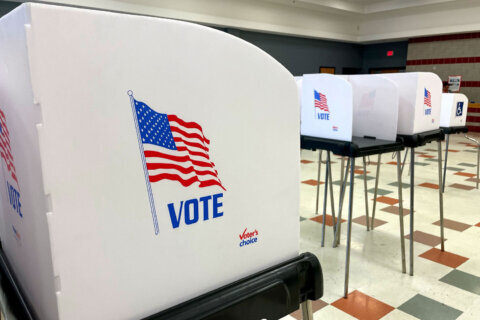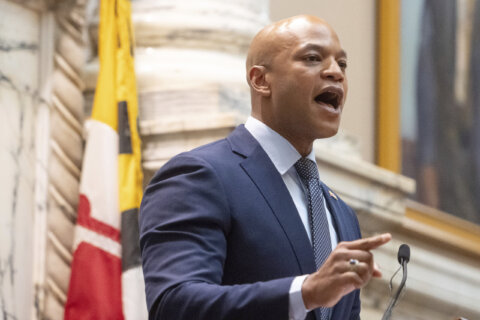This article was republished with permission from WTOP’s news partners at Maryland Matters. Sign up for Maryland Matters’ free email subscription today.
This content was republished with permission from WTOP’s news partners at Maryland Matters. Sign up for Maryland Matters’ free email subscription today.
After months of rule rewrites, public comments and amendments, Maryland’s state board tasked with controlling the costs of prescription drugs has finalized a framework to evaluate which medications may be eligible for price reductions.
The Prescription Drug Affordability Board approved new regulations Monday to establish a process for how the panel will determine which prescription drugs are difficult for Marylanders to afford and would be included in the board’s work to lowering those costs.
The process will include input from the public, consideration from stakeholders and an information gathering period to help the board determine which prescription drugs are eligible.
The board, which was created by legislators in 2019, has been slow to begin operating, due in part to former Gov. Larry Hogan (R) vetoing a bill that would have funded the board’s work.
Gov. Wes Moore (D) signed additional legislation this year that reaffirms the board’s authority to issue upper payment limits and extends deadlines from the earlier law. In addition, the General Assembly carved out an additional $1 million in the 2024 state budget for the board’s operations.
Now, the board is setting the groundwork to begin operations. The rules approved Monday to lay out the process for evaluating drug costs will be active in the fall, according to board executive director Andrew York.
Initially, the board will determine a “substantial” lists of drugs that could be evaluated for price-lowering efforts, York explained during the meeting.
Board members will be able to nominate a prescription drug to consider for evaluation at future board meetings and the drugs in consideration will be open for public comment. After the board determines which drugs will be evaluated, there will be an additional 30-day public comment period and the board will begin gathering information on the drugs to determine affordability.
York wanted to clarify that medications under evaluation may not be deemed unaffordable, and that if the board takes up a prescription drug for consideration, it is not an indictment of the drug’s cost.
“We’re just going to be very careful to clarify that anything that shows up on this list does not mean it’s causing affordability complaints, and we’re not trying to bring any kind of adverse attention to those,” York explained at the meeting. “It is mainly to start the discussion and make sure that we get all the information that we need.”
If the board determines that a medication is unaffordable, the next steps would be to discuss how to reduce costs for Marylanders. But this part of the process is still under development.
One of the methods that the board might consider is setting what are called upper payment limits for prescription drugs purchased for state and local insurance plans.
That would include plans offered by state institutions, institutions of higher education, state or county correctional facilities and state hospitals.
By establishing an “upper payment limit” that state and local government health plans can be forced to pay to provide those drugs to their employees, advocates hope the board will be able to bring down costs for all Marylanders.
However, some affordability board members suggested that setting upper payment limits may not be the solution for every high-cost prescription drug they evaluate, and that the method should be used on a case-by-case basis.
“There are a number of different market distortions or market failures that can cause a drug to be unaffordable. Maybe upper payment limits aren’t always the answer,” York told the board.
The regulations for setting upper payment limits will soon be drafted and up for consideration from the board at a future board meeting, York said.
While the board is making progress in setting the framework for how it will operate to help reduce prescription drug costs, it’s not clear when Marylanders will begin to see the reduction in prices as a result of the board’s actions.







